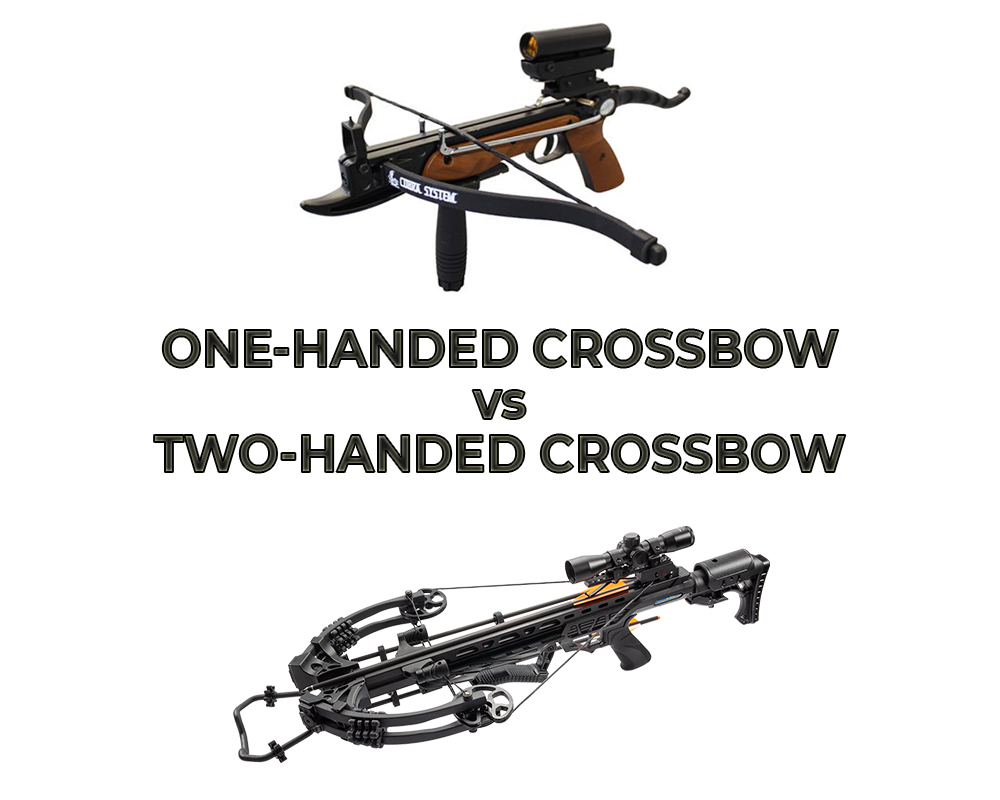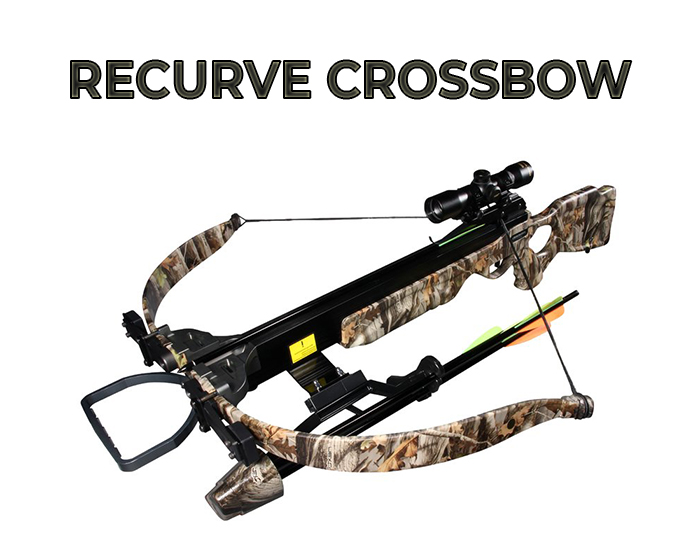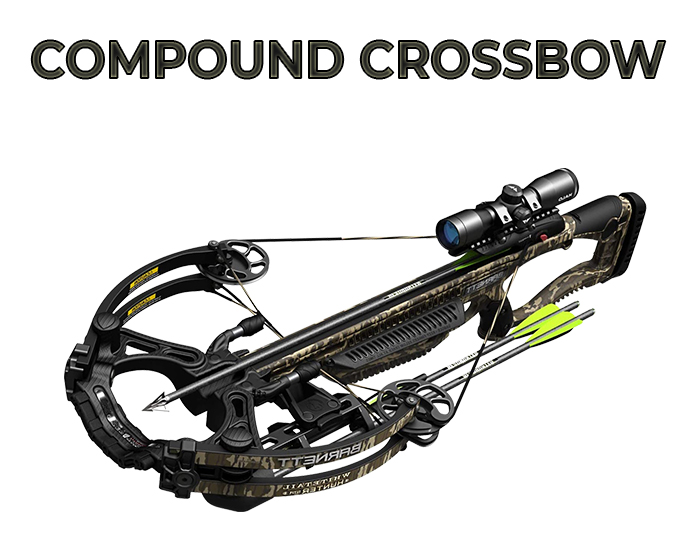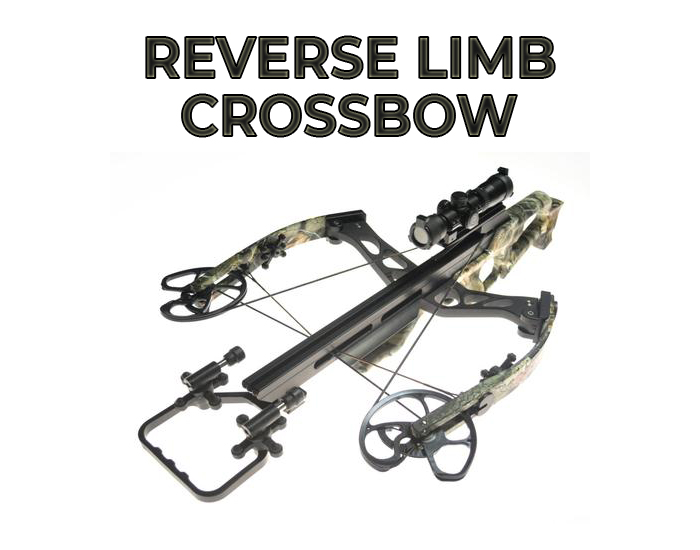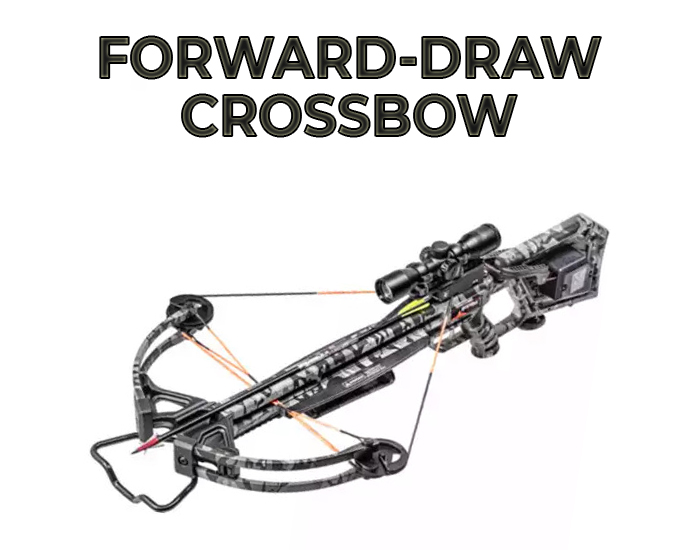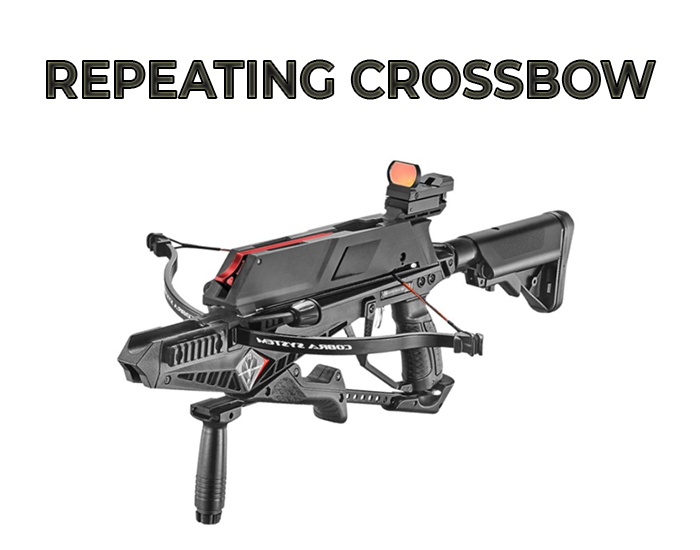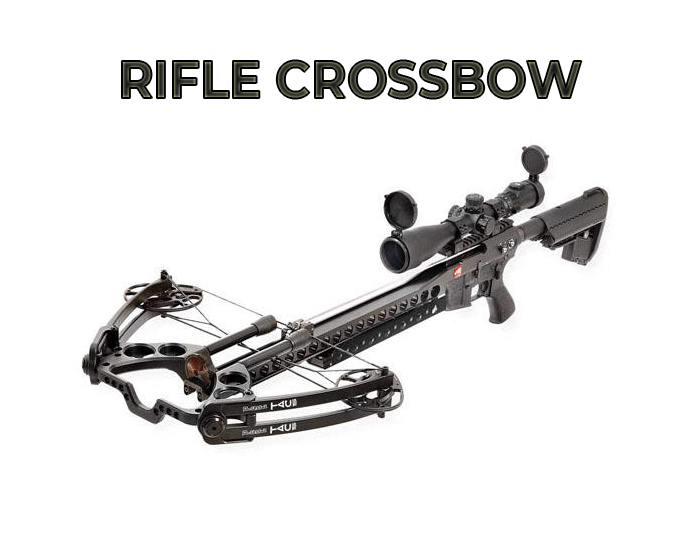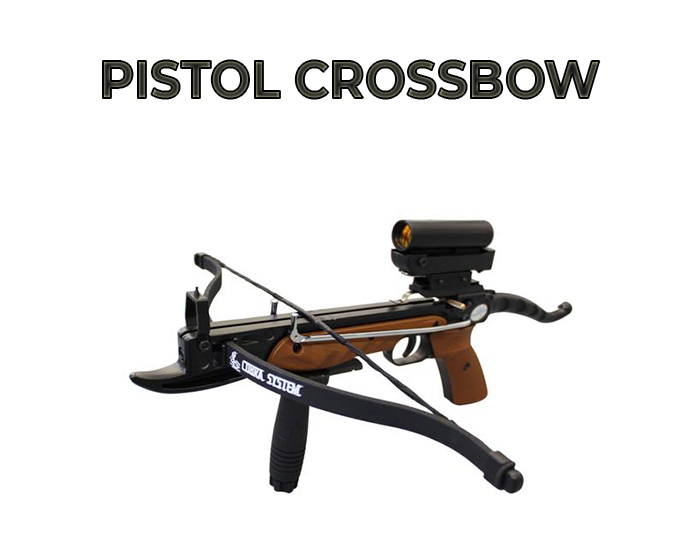In this day and age, there are several different types of crossbows to serve different purposes. But why did all these types emerged?
First, bowhunting has been around for thousands of years. As man evolved, so did the bow.
Used dominantly as a hunting weapon, men constantly upgraded crossbows to gain speed, accuracy, and power. Thus, with time, modern crossbows were invented.
Today, hunting crossbows are used also as a sport, which calls for state-of-the-art equipment on the field to make the experience pleasurable.
Let’s dig into each type to understand what they are best for.
Contents
One vs. Two-Handed Crossbow Types
You can get crossbows in two different types: one-handed “pistol” models and two-handed models.
One-handed crossbows are not as common as two-handed models. However, hunters still use them for particular purposes such as small game hunting, target shooting, or sometimes self-defense.
One-handed crossbows are light in weight and easier to carry. However, they lack the precision, power, and accuracy offered by two-handed crossbows.
Nevertheless, one-handed crossbows cost less and are also pretty compact.
Two-handed crossbows, on the other hand, are the most popular. Despite the heavier weight and bigger size, they provide top-level precision and accuracy.
They are also more powerful in comparison and can be used for numerous purposes such as fishing, hunting, target shooting, scientific sampling, and military use.
While one-handed crossbows are easier to operate, two-handed crossbows do not require much learning either. Most people easily get familiar with their aiming.
Recurve Crossbows
The recurve crossbow gets its name from the delicate curves at the end of the bow. These curves point in the opposite direction from the user and keep the string in place to avoid flick out.
The curves put a strain on the string, which helps to lock it in. As a result, both the operator and the equipment are kept safe from flick-outs.
It is often made from Aluminum alloy, magnesium, or carbon fiber. They are perfect for large game targeting due to their more incredible speed and power as compared to other crossbows.
The longer draw length allows for greater projectile and acceleration, which makes it suitable for long-range shots. Also, it is pretty easy to aim with a recurve crossbow.
However, one drawback of the recurve crossbow is its weight. As a result, it is a hassle to carry it around unless you are powerful and don’t mind some extra weight.
Moreover, the curves put too much strain on the string, which means you might have to get a new one frequently unless you invest in a premium solid string at once.
Another concern is that recurve crossbows make a lot of noise, which can cause trouble on the field by attracting unwanted attention.
Compound Crossbows
Compound crossbows are distinguishable from other types due to their additional parts. These parts are also the reason why it takes more patience and skill to handle compound crossbows.
A compound crossbow has multiple cables, which can store greater energy when pulled back. The central mount, known as the riser, secures the limbs of the bow.
The limbs have to withstand tense amounts of energy and therefore are made from solid yet lightweight materials.
When compared to a recurve crossbow, a compound crossbow is stiffer. As a result, the shot fired from a compound crossbow is driven with more power.
In order to make it easier to pull the stiff limbs, compound crossbows come with cams and pulleys.
Moreover, the power stroke of a compound crossbow depends on the stock length. The greater the length of the stock, the faster the bolt flies.
Reverse Limb Crossbows
Reverse limb crossbows are based on reverse draw technology which was recently introduced.
This type of crossbow is visually different from all others due to the reversal of limbs compared to conventual crossbows. The reversed limbs allow for more efficient performance, which has made it highly popular among hunters as well as manufacturers.
It offers greater balance thanks to the reverse limb orientation that allows the limb pocket and riser to sit close to the trigger. As a result, the front-end weight is reduced, and the shot is fired more stably and comfortably.
The reverse draw technology also keeps the string in constant contact with the arrow for full barrel length. This allows for greater power stroke and hence greater speeds.
Finally, the noise and vibration generated by these types of crossbows are relatively low.
Forward Draw Crossbows
The forward draw, or popularly known as the conventional-draw crossbow, is the opposite of a reverse draw crossbow.
The forward draw is popular for having a high velocity and being lightweight. However, the front end of the bow feels heavier. That’s because the riser is situated at the front of the barrel.
As a result, the center of gravity is away from the operator. Nevertheless, being lightweight allows for easy maneuverability, which makes it suitable for beginners.
While forward-draw crossbows don’t offer the best performance, they still have a somewhat good speed and decent accuracy compared to reverse-draw crossbows.
However, all these limitations do come at a low cost, which is again good for beginners.
Repeating Crossbows
Historians trace the origin of the repeating crossbow back to China. It has been in use since the times of the Warring States.
Today, the ancient repeating crossbow has been modernized to suit the needs of the modern hunter. However, it doesn’t look anything like an ordinary crossbow.
The bolts in a repeating crossbow are held in a magazine at the top. It usually works as a one-handed crossbow and provides a higher fire rate in comparison to other types of crossbows.
Repeating crossbows are perfect for hunters looking to make consistent and fast shots on the field.
Since it has a unique design, it takes some time to master it. However, once you are familiar with it, it will be easier to operate than a rifle crossbow.
The whole operating process is mechanical, which often becomes redundant as one uses it for the long term. Nevertheless, it still has many advantages, such as the single-handedness and the low weight, which can lead to a good hunting day on the field.
Rifle Crossbow
The rifle crossbow is a modern hybrid that reflects the design of a usual crossbow and offers the convenience of the rifle.
The rifle aspect of this crossbow allows it to offer top-notch accuracy and aim that allows for extreme precision.
It also comes equipped with some of the most advanced technologies, such as impressive sights and heavy-duty build based on foot-pull and fiber.
These crossbow types are a perfect match for anyone looking for long-range crossbows as they can fire shots as far as 250 feet. It is also relatively narrow as most rifle crossbows measure as high as six inches in width.
As a result, it becomes easy to get it in position even in forests with dense tree populations. The highlight feature of this kind of crossbow is, without a doubt, the speed it offers.
However, the downside is the amount of power required to operate. The complicated cocking procedure and the high power packed inside require the operator to exert an equal amount of energy.
Pistol Crossbow
A pistol crossbow does not come as a combination of a pistol and a bow. Instead, they are called that way due to their compact size and design.
This makes them suitable for hunting small animals. They are also used popularly for target practicing. However, if you are going on the field to hunt a large animal, this is not the ideal equipment to take along.
The average draw weight on a pistol crossbow is approximately 80 pounds. Due to its small size, a pistol crossbow is not the most powerful of the lot. Hence, you shouldn’t expect great speeds and shot power either.
However, one advantage of the compact design is that pistol crossbows are highly user-friendly, especially for beginners. In addition, they are easy to handle and maneuver due to their lightweight.
Pistol crossbows come with all the features a beginner needs, such as self-cocking and solid grips. They also often come preassembled in the box, and some models even come with scopes for greater aim and shot accuracy.

Hi, my name is Michael Goodman. As a skilled hunter and a man of the field, I will show you some sophisticated, intelligent, and useful hunting methods and techniques.


